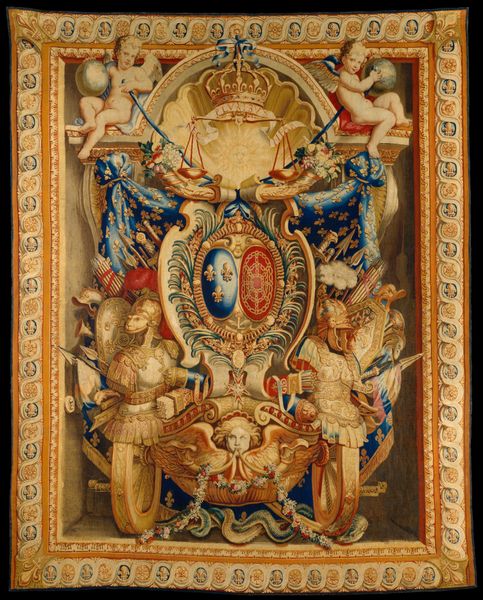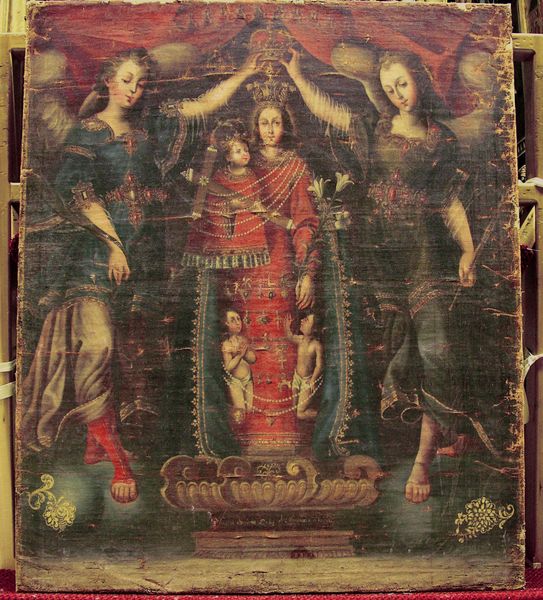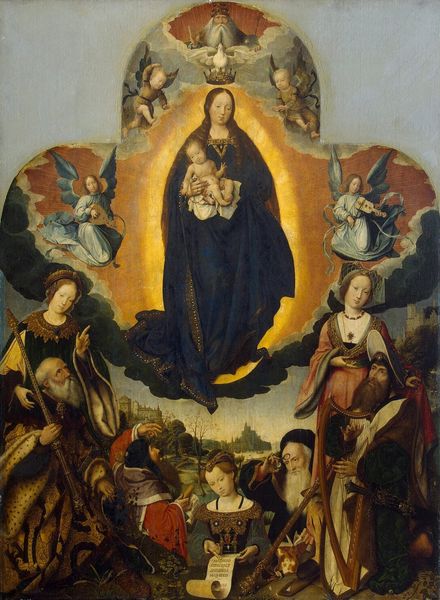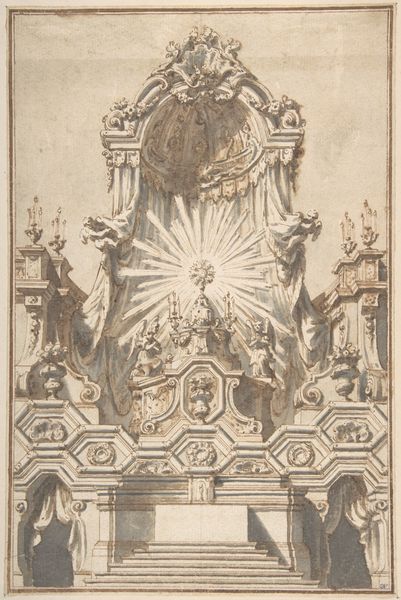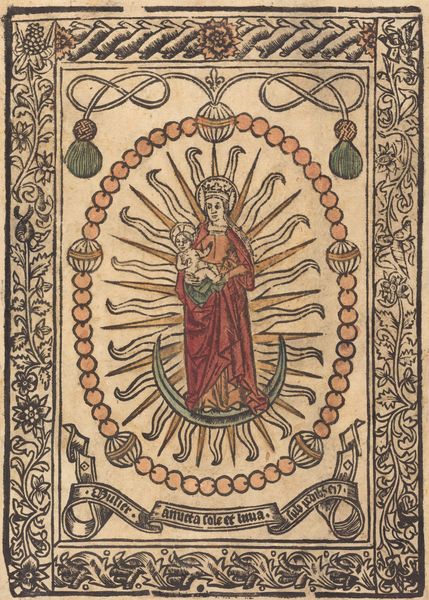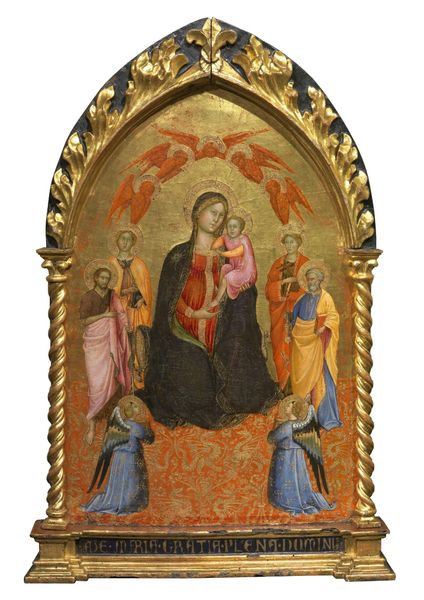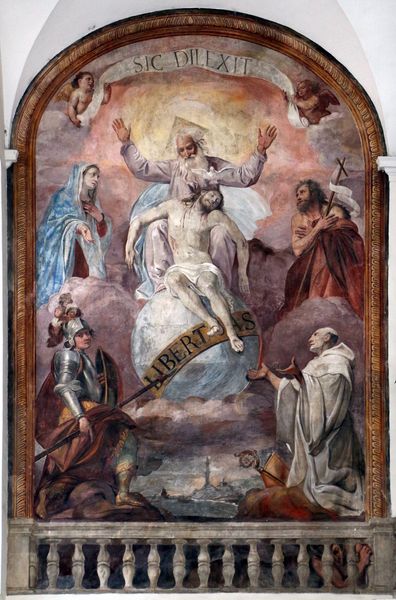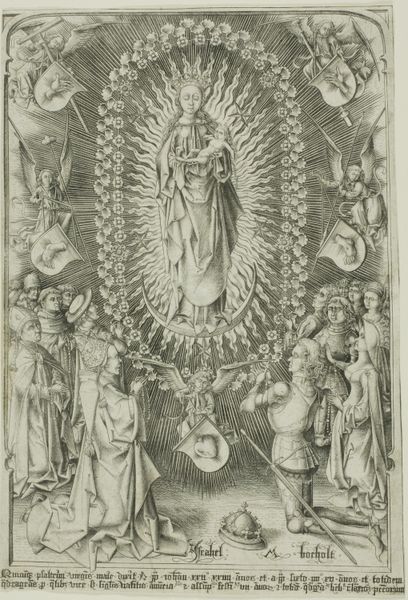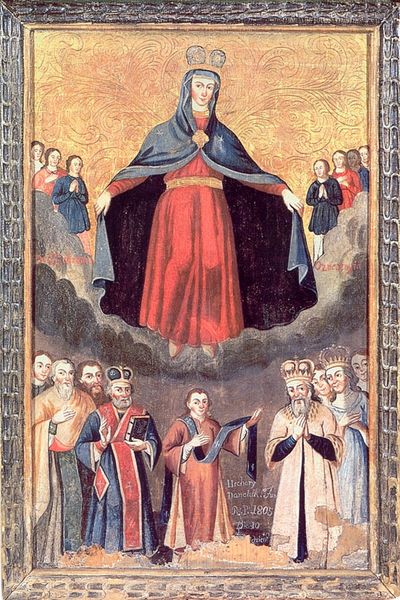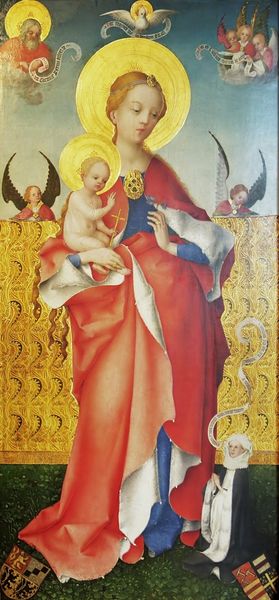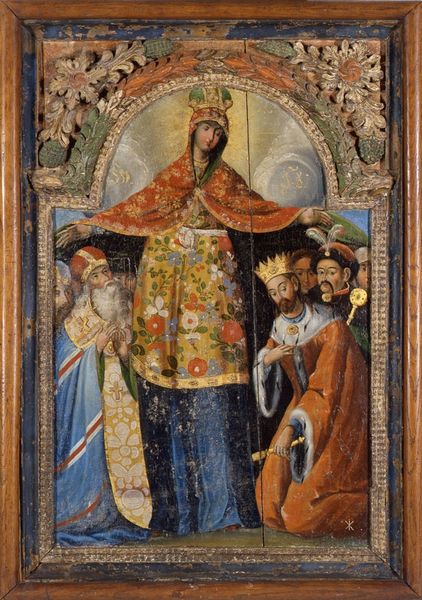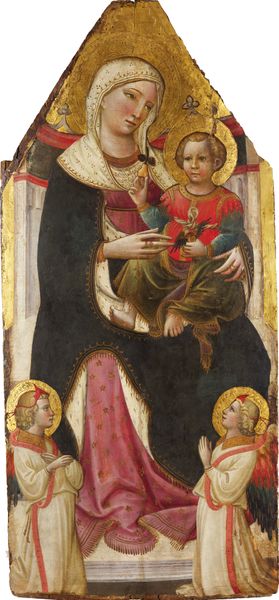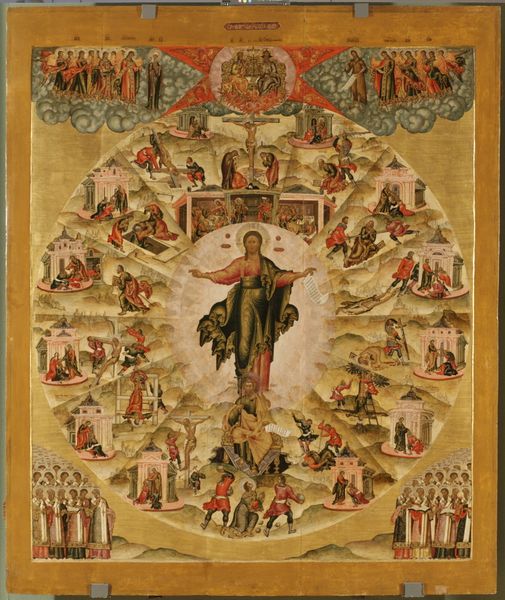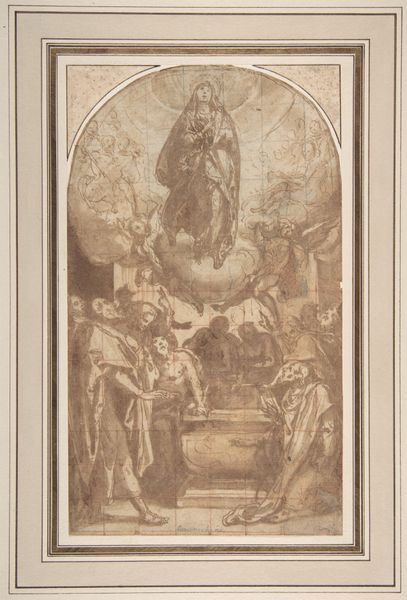
The Virgin of El Camino with St. Fermín and St. Saturnino 1773
0:00
0:00
painting, watercolor
#
portrait
#
water colours
#
painting
#
figuration
#
watercolor
#
history-painting
#
virgin-mary
#
miniature
Dimensions: 22 1/4 × 16 1/2 in. (56.5 × 41.9 cm) Framed: 25 3/8 × 19 3/4 × 1 3/8 in. (64.5 × 50.2 × 3.5 cm)
Copyright: Public Domain
Editor: So this is *The Virgin of El Camino with St. Fermín and St. Saturnino*, made with watercolor in 1773 by Nicolás Enríquez. It strikes me as such an interesting composition—it's layered and has a dreamlike quality, a little like a memory. What stands out to you about this piece? Curator: For me, it's how this painting acts as a visual echo chamber. Notice the Virgin, central and grand, seemingly emerging from a sculpted base. But look closer: the Virgin *is* the sculpture. She becomes a powerful cultural symbol, a convergence point for faith, identity, and history. See the drapes and angels – aren't they reminiscent of theatrical staging? Editor: Yes, absolutely. It feels very staged. Curator: Exactly! This pictorial device elevates the figures—making them icons, reinforcing their symbolic significance. Now, consider Saint Fermín and Saint Saturnino below. Editor: They appear like foundational supports, grounding the Virgin. Curator: Precisely! They root her in a specific cultural context. Note the coat of arms, it functions almost as a signature, staking a claim to heritage and belonging. The whole painting is doing something similar - how collective memory gets crafted and reinforced. What kind of dialogue do you think a viewer would have with this image at the time? Editor: I suppose that the message would be about the connection of the specific location or culture. But also, the style would suggest this location might not necessarily exist. So both reality and artifice mixed together! Curator: An excellent insight, this is how memory is both fact and art. The experience shows how the layering of cultural and religious imagery serves a dual purpose: celebrating specific saints, and cementing collective identity. Editor: I didn't even think about the constructed quality of collective memory, the piece makes me want to question and challenge them, too. Thanks so much for pointing this out!
Comments
No comments
Be the first to comment and join the conversation on the ultimate creative platform.
